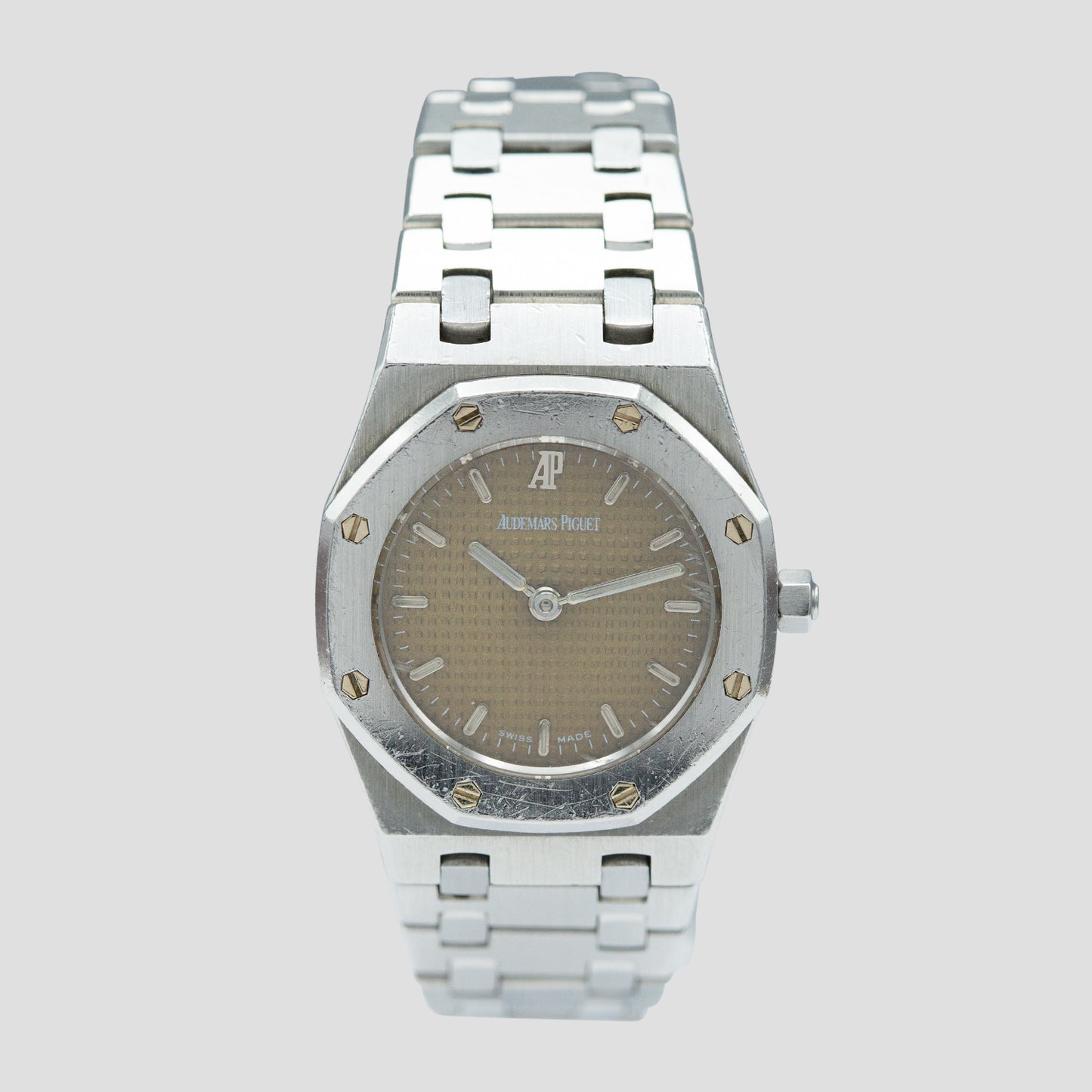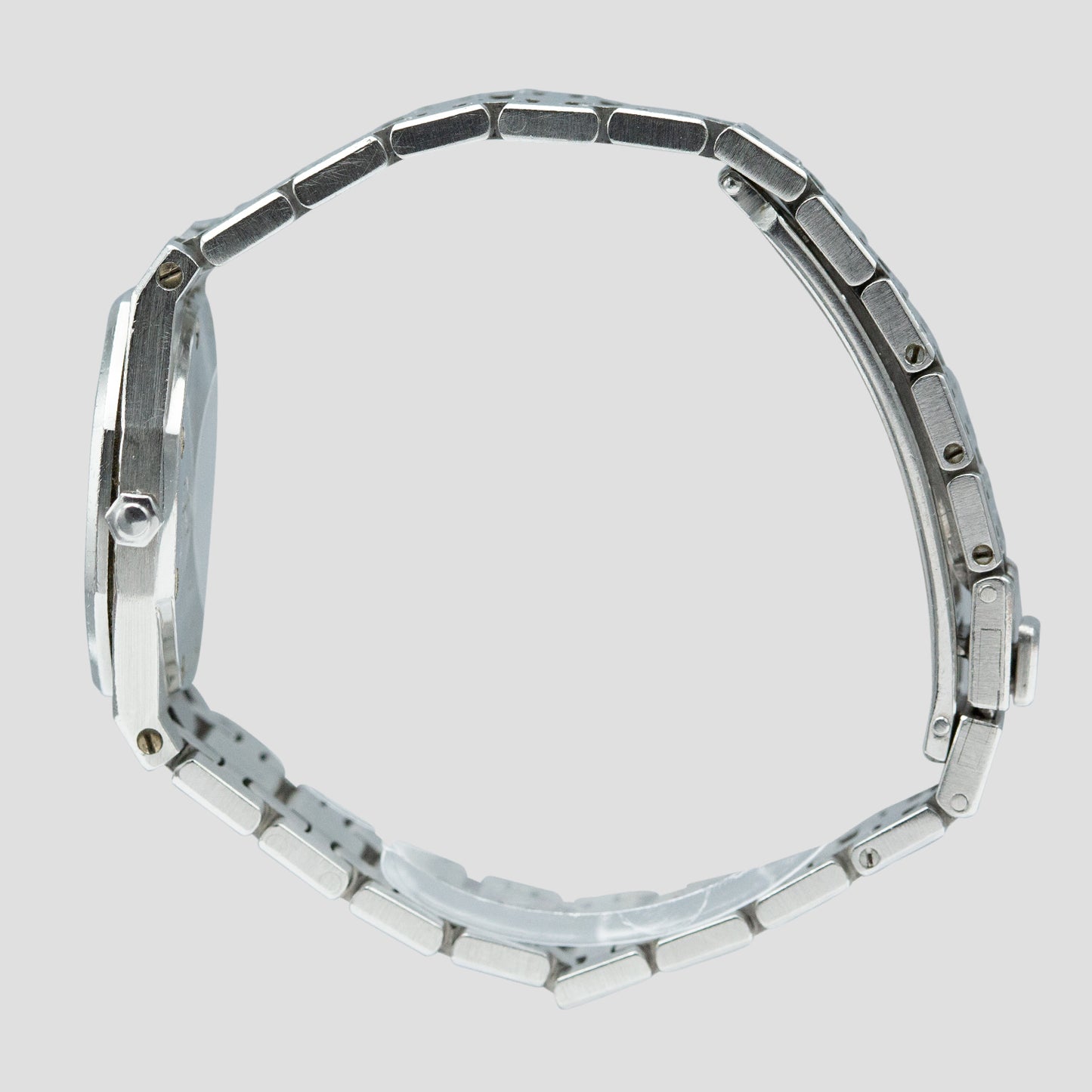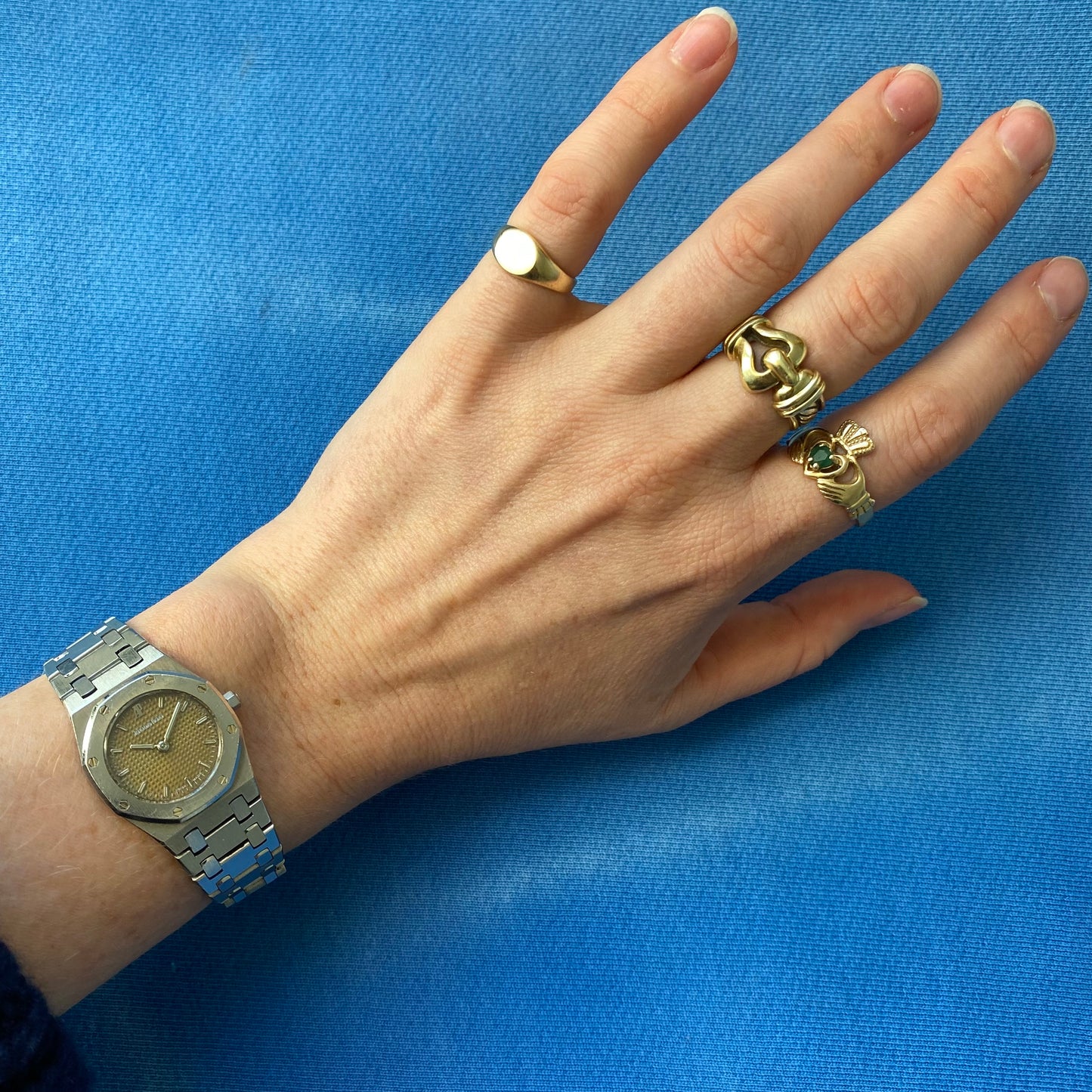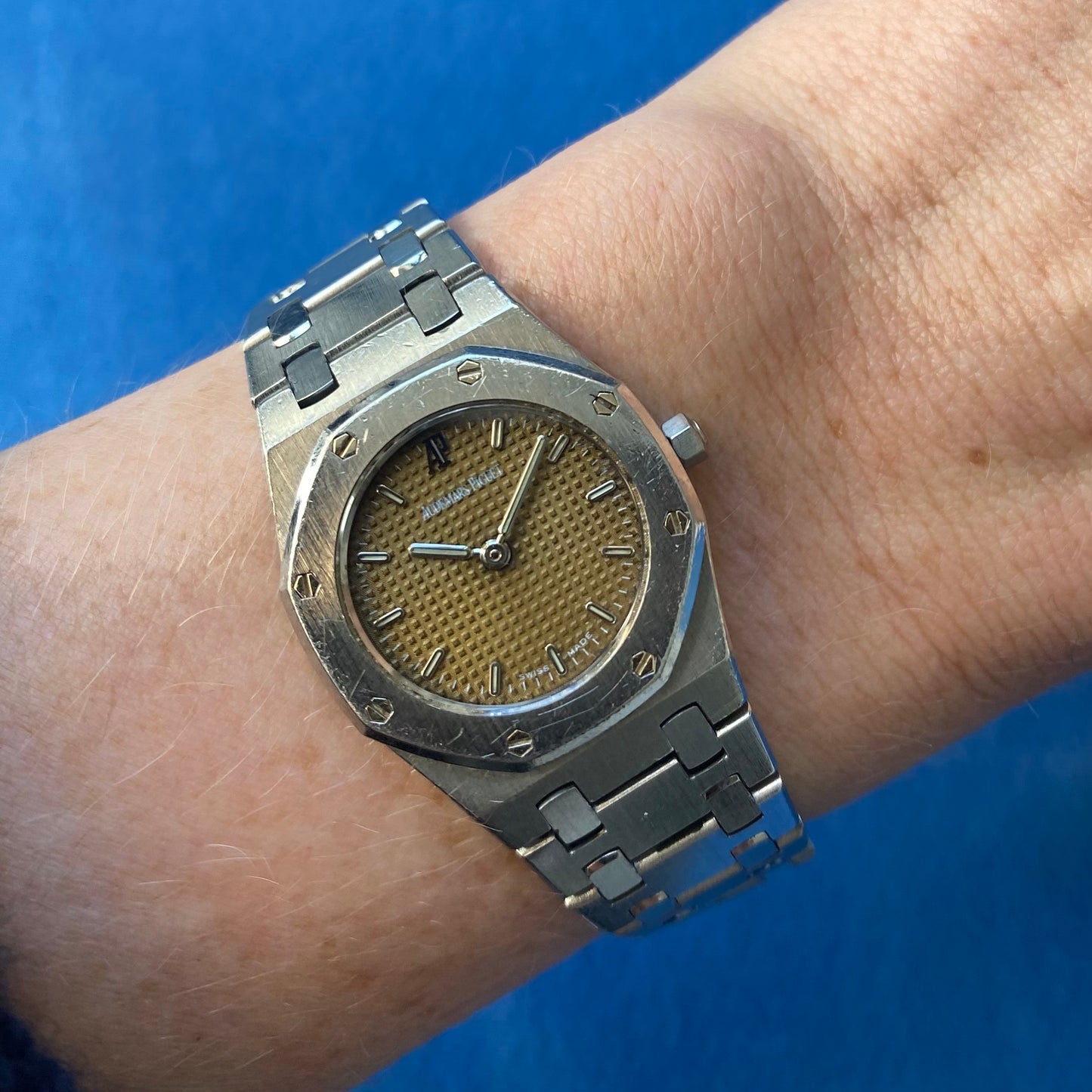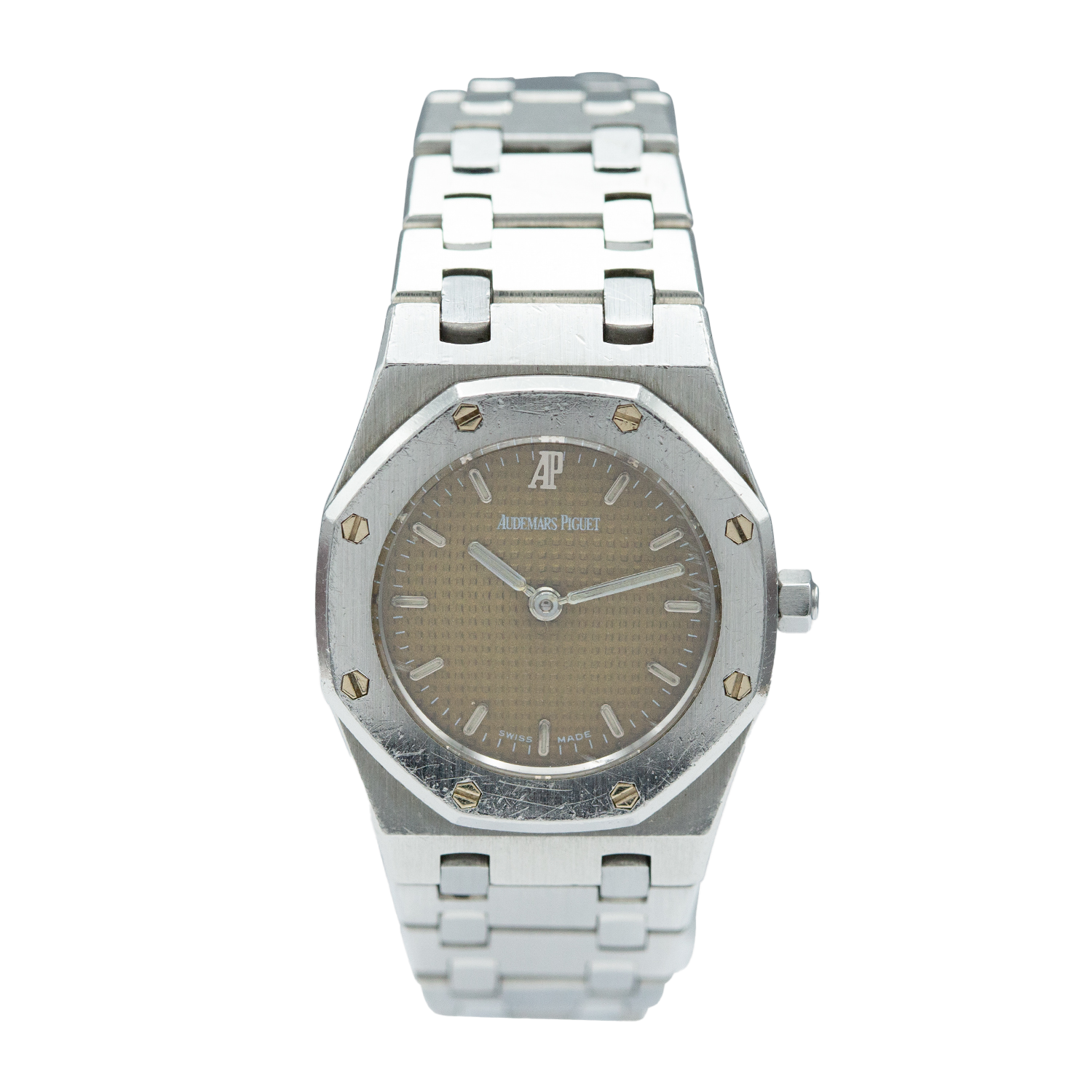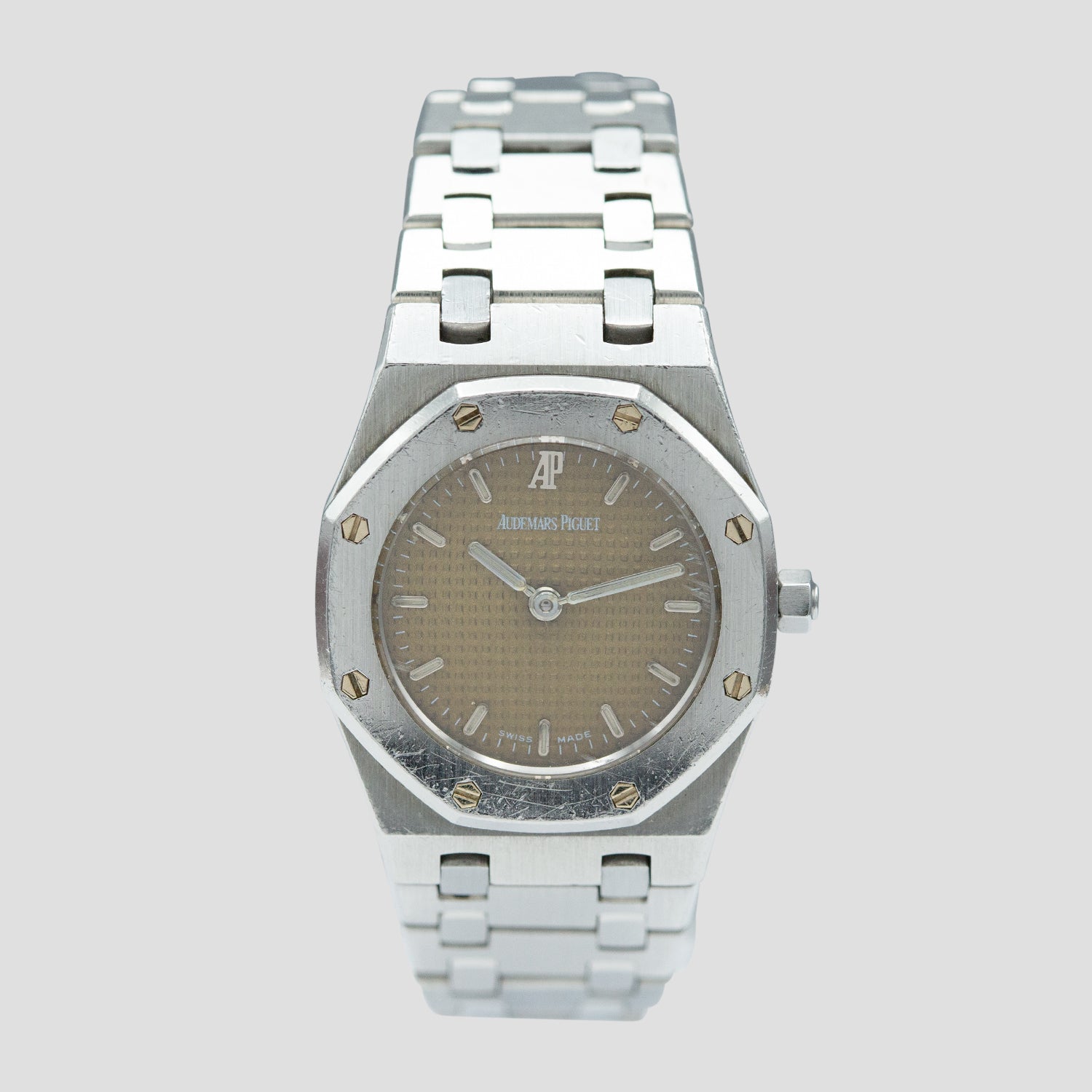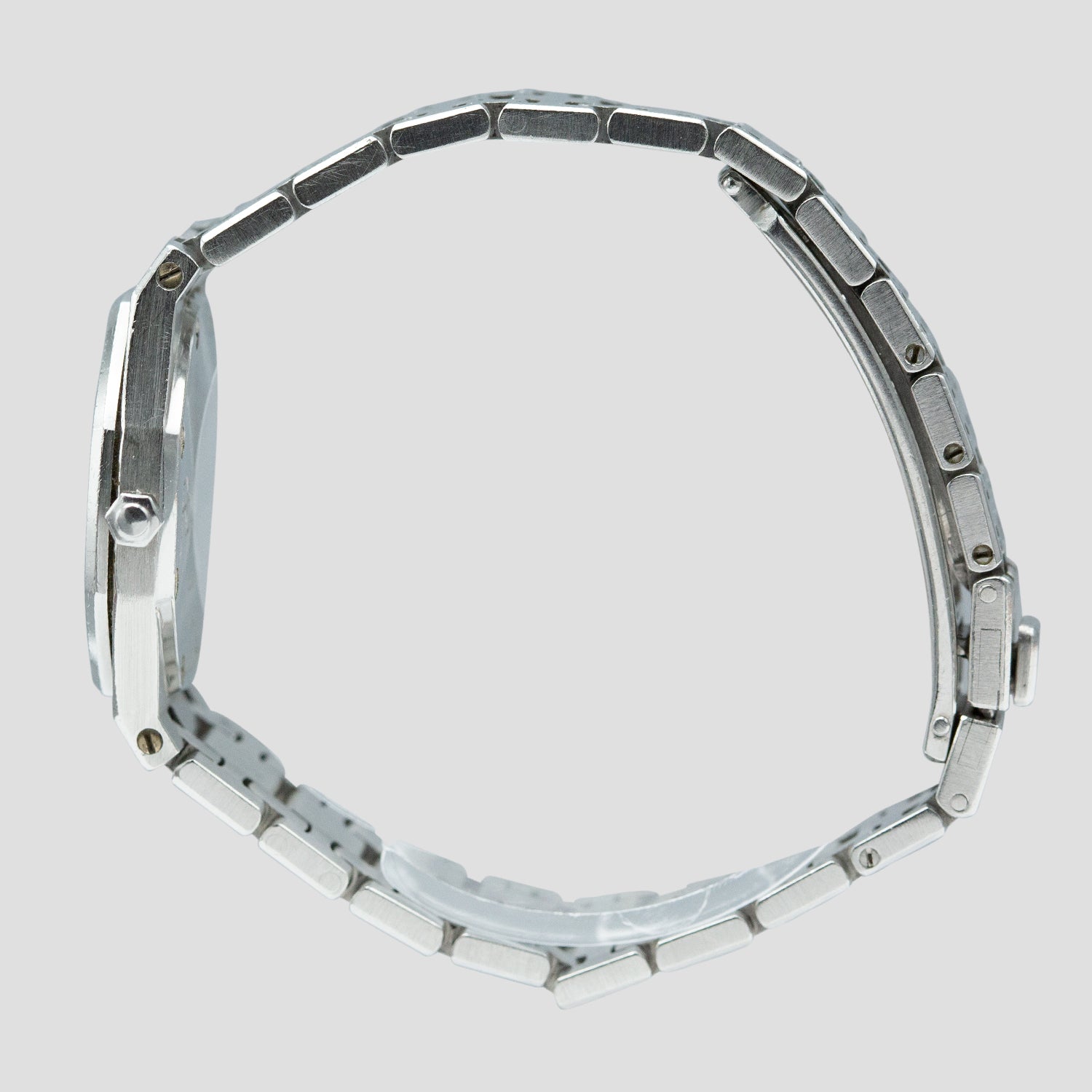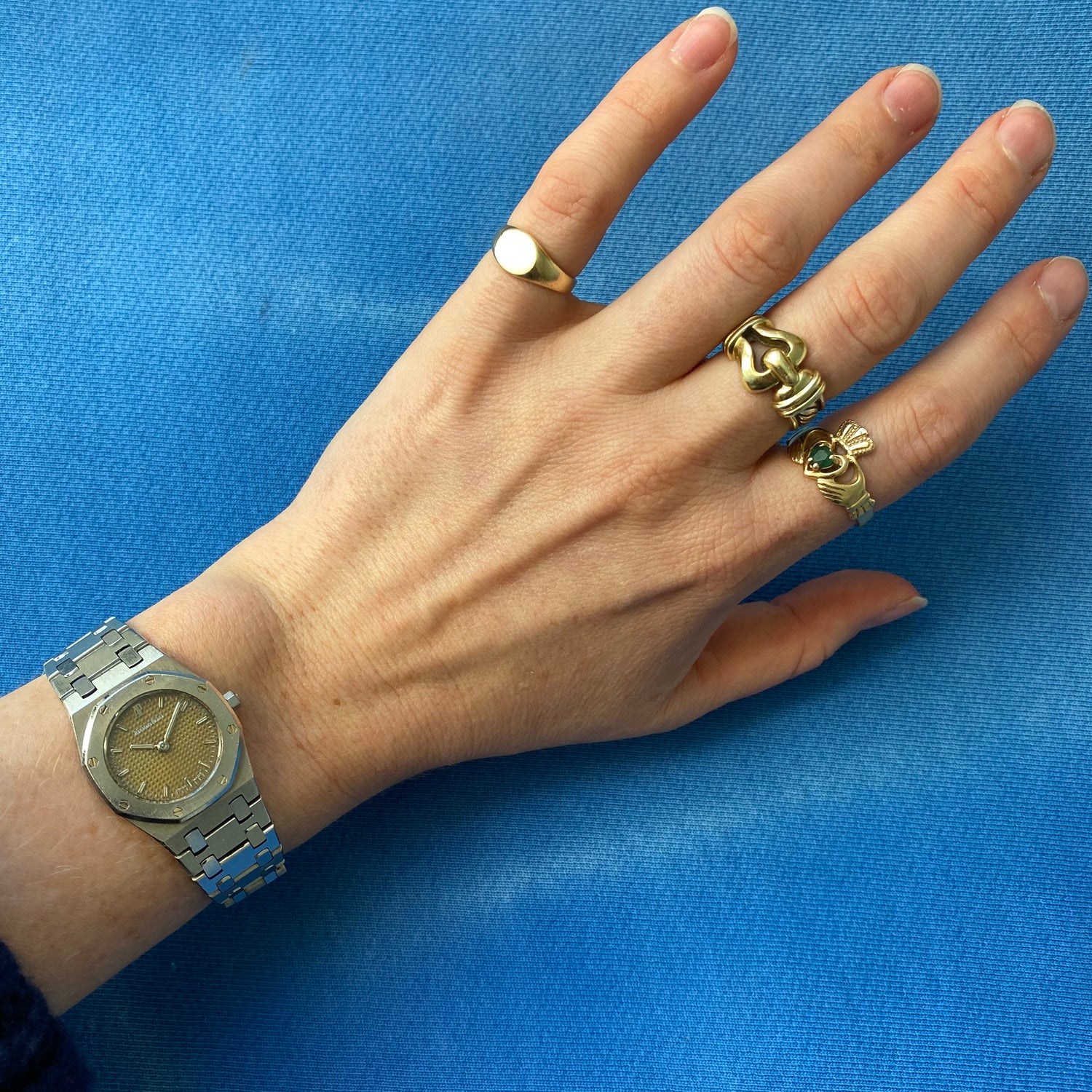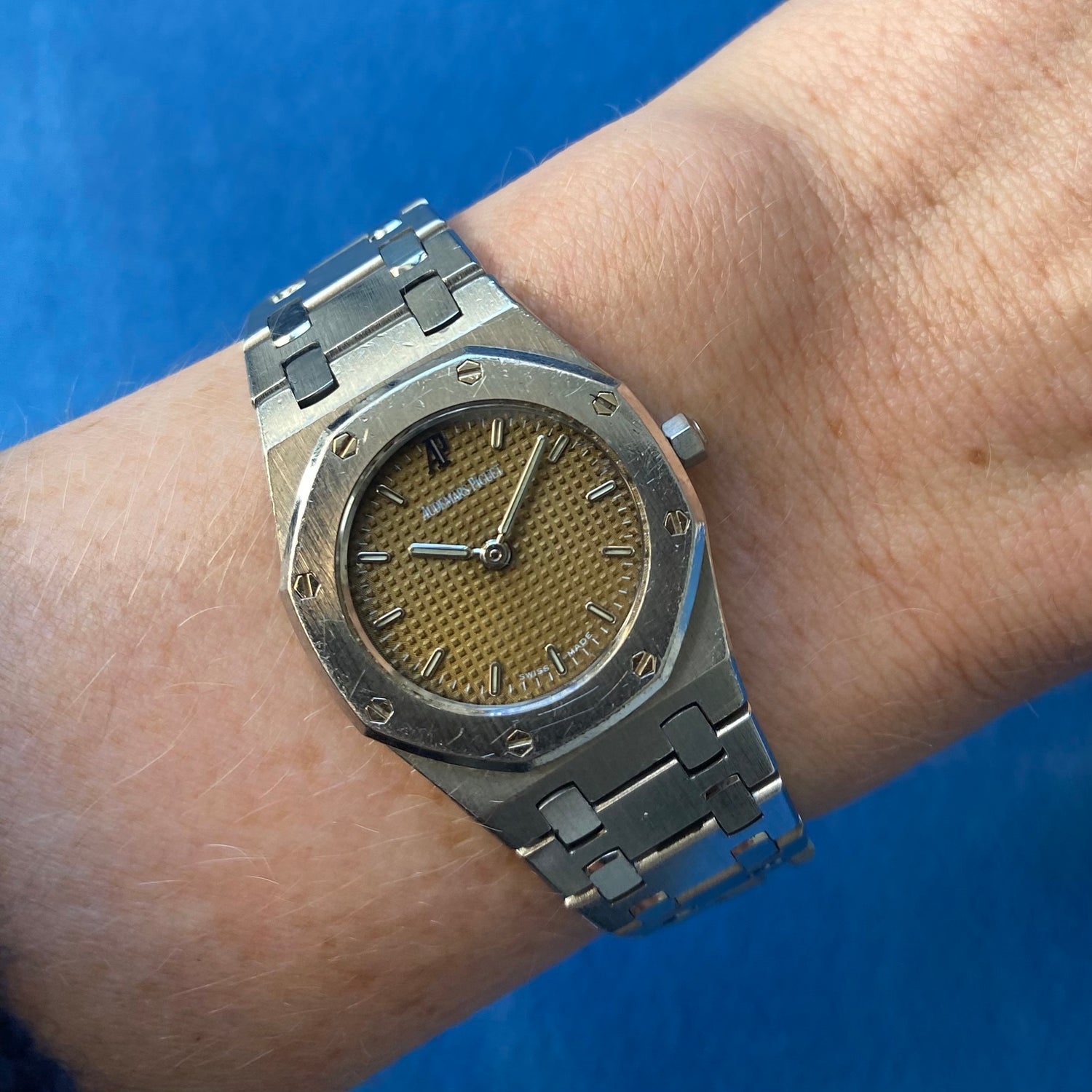Shop Dimepiece
Audemars Piguet Royal Oak
Couldn't load pickup availability
A teeny tiny Royal Oak! If I could buy any watch today, it would be a TTRO. The first Royal Oak was highly impactful when it was released to the world in the '70s. Designed by icon Gérald Genta (aka "GG"), the Royal Oak was the first luxury sports watch of its kind, presenting an elevated, everyday alternative to the dress watch. Many are available at SKY HIGH PRICES, but this is a little guy, often slept on. Add to that its TROPICAL DIAL, which is a tanned effect that occurs over time with sun exposure (watches, they’re just like this… put them in the sun and they tan! Don’t forget your “Maui Babe” lotion). If you found a larger, “men’s” sized vintage watch with a Tropical dial…? Forget it, it’d set you back six figures.
THE BASICS:
DATE OF BIRTH: C.1980’s
MATERIAL: Steel with a tropical dial
SIZE: 25MM aka TEENY TINY
MOVEMENT: Quartz 2610
CONDITION: Original condition, worn but unpolished, scratches and signs of natural wear.
BOX/PAPERS: No/Yes
THE NITTY GRITTY:
A stainless steel Ladies Royal Oak with a quartz movement. This is the third time we have brought one of these, now phased out, original ladies size Genta classics to the page. This might well be the most interesting yet. This dial has transformed from what was originally envisaged by the design team at AP and has taken on a life of its own. This early example, all steel watch, may not be the safe queen some look for, but it is what a lot of collectors crave.
The dial on this watch is the crowning glory and most desirable feature of an already cool watch! It is the ‘Petite Tapisserie' found on the first Royal Oak Jumbos, and on mostly all Royal Oaks from the ‘80s and ‘90s, and also on the first Royal Oak Offshore models bearing reference 25721. The squares are extremely small and the pattern is tight compared to the later executions. They are laborious to make with the brass dials being engraved by a burin, a precision metalwork chisel, that reproduces the motif on a disc attached to the machine, like a pantograph. A pointer rotates across the disc from the periphery to the center. The system is combined with a tool that forms the little lozenges between the pyramidal squares and takes between 20 and 50 minutes, depending on the dial's diameter. It's a delicate operation. A mere skip is all it takes to damage the piece as the slightest impact is as visible as dust on a mirror. For this technique to be applied to these smallest of case sizes is quite remarkable.
Not only is this fantastic, but so is the color it has now aged to. This is what is known as a “Tropical” dial. This is where the sun has bleached the original color to this most extraordinary, almost mustard brown color.
This model also does not include the date located at the three o’clock position, making for a less cluttered overall look.The AP logo is cut from white gold and pinned to the dial at the twelve o’clock position, along with the Tritium filled hour markers. These dials are very complicated and exceptionally expensive to create.
After celebrating its 50th birthday last year, the Royal Oak, along with the Patek Philippe Nautilus, both designed by Gérald Genta, are now the most iconic ‘sports’ watches ever designed. This is an earlier example than the blue one on the website. This has the earlier deployant buckle, which opens from the middle, like the larger size case bracelets, and is numbered 970 on the back. The condition is preowned, but unpolished, which is how these watches must be maintained. Polishing them ruins all the original, intricate case angles.
This is an exceptional watch. Very rare in itself, very few examples being produced by AP. With a tropical dial, even more unusual. If this was in the Jumbo size, it would be a 6 figure watch!
Share

